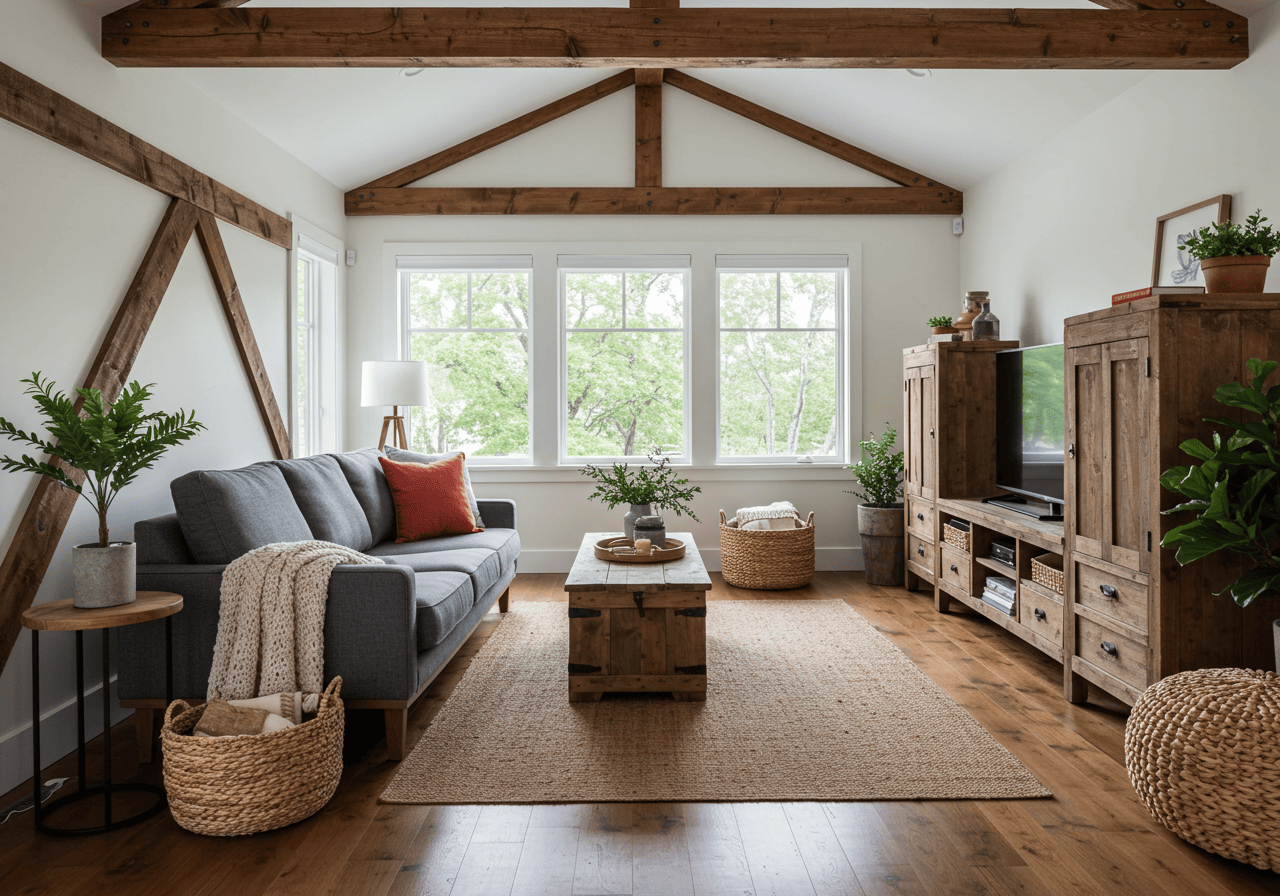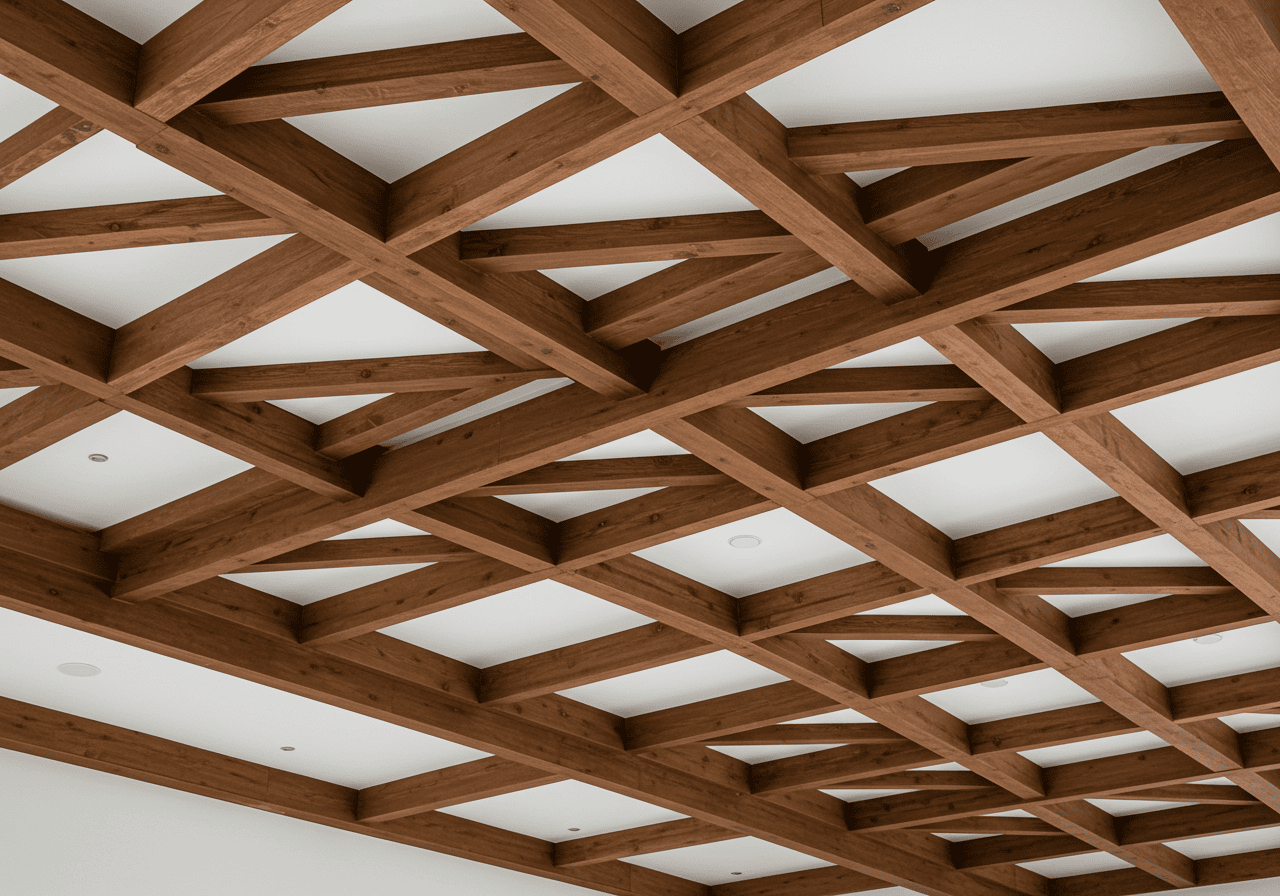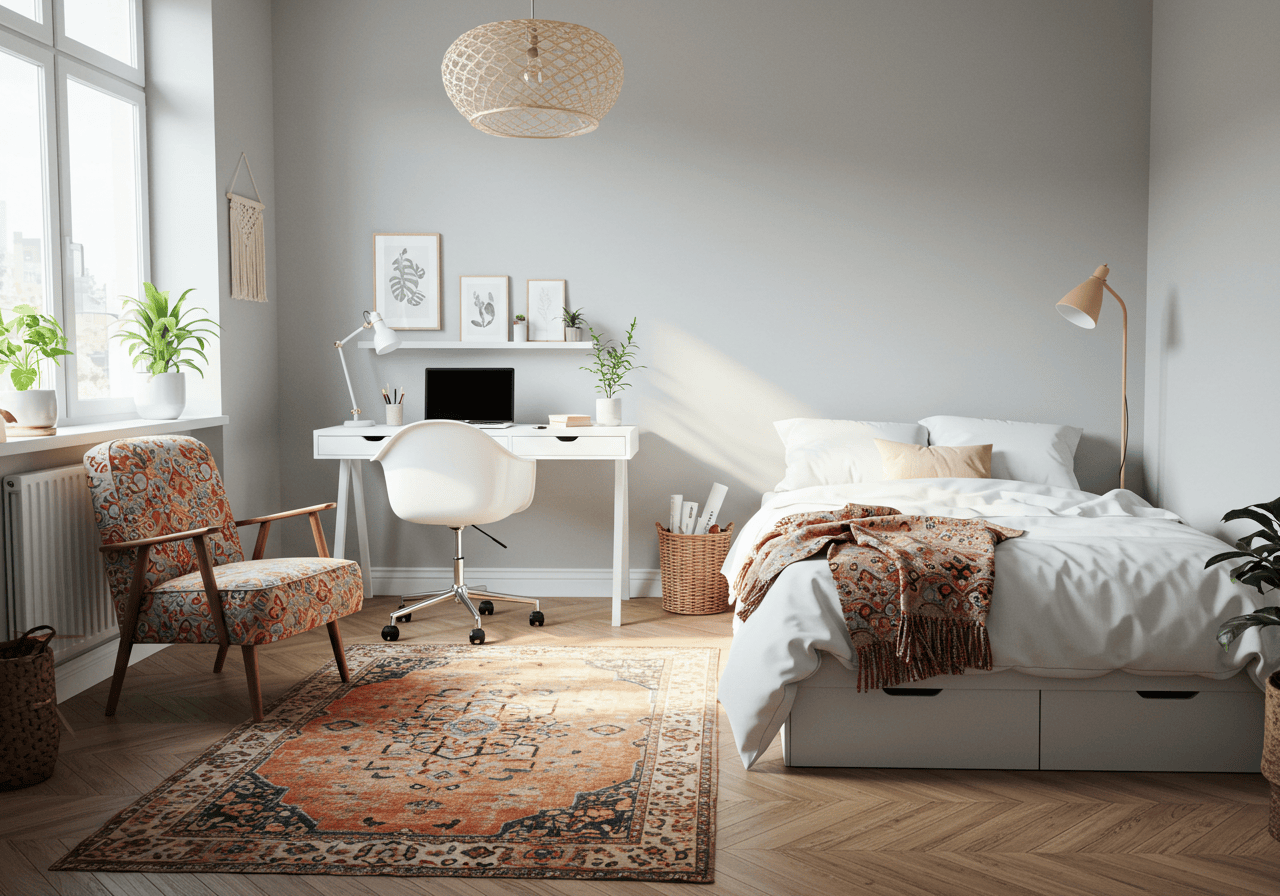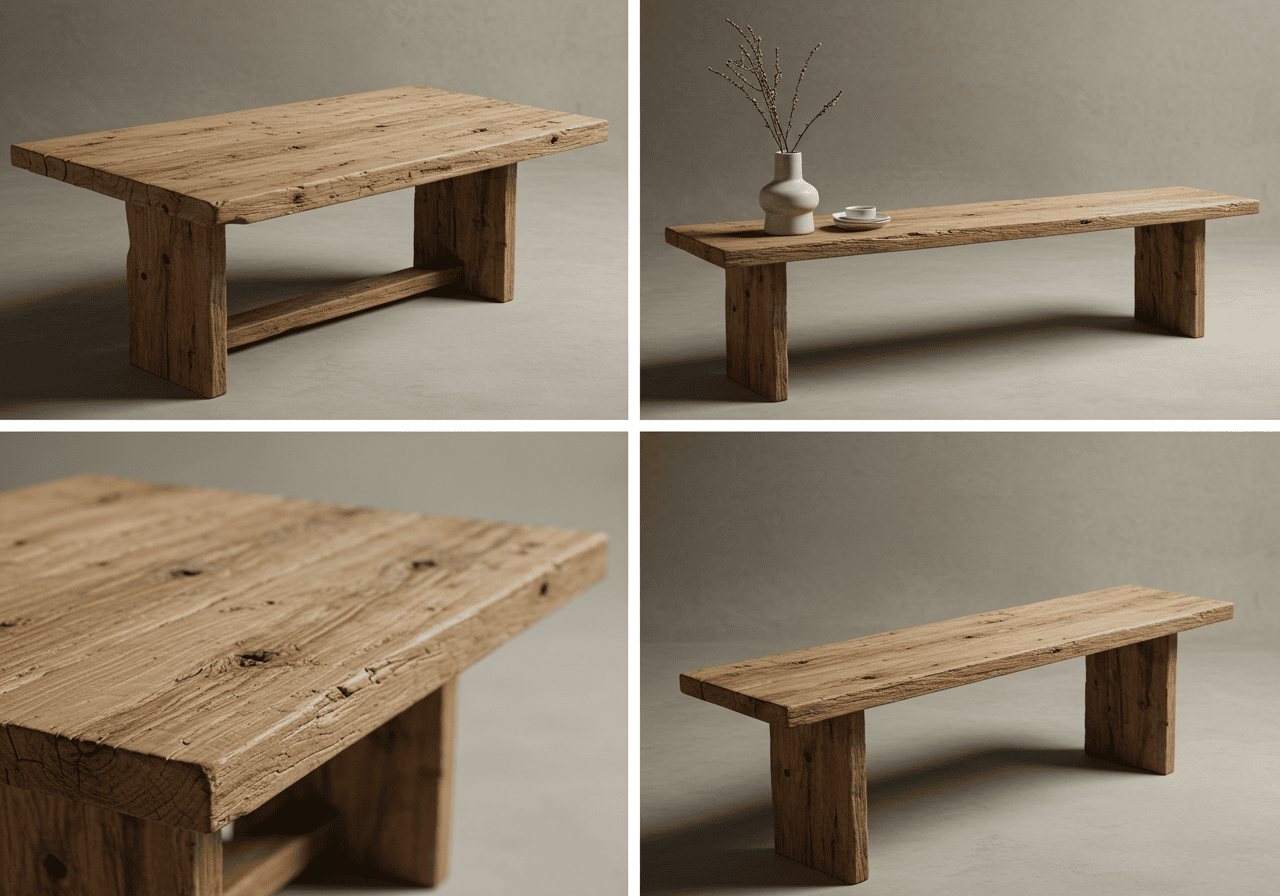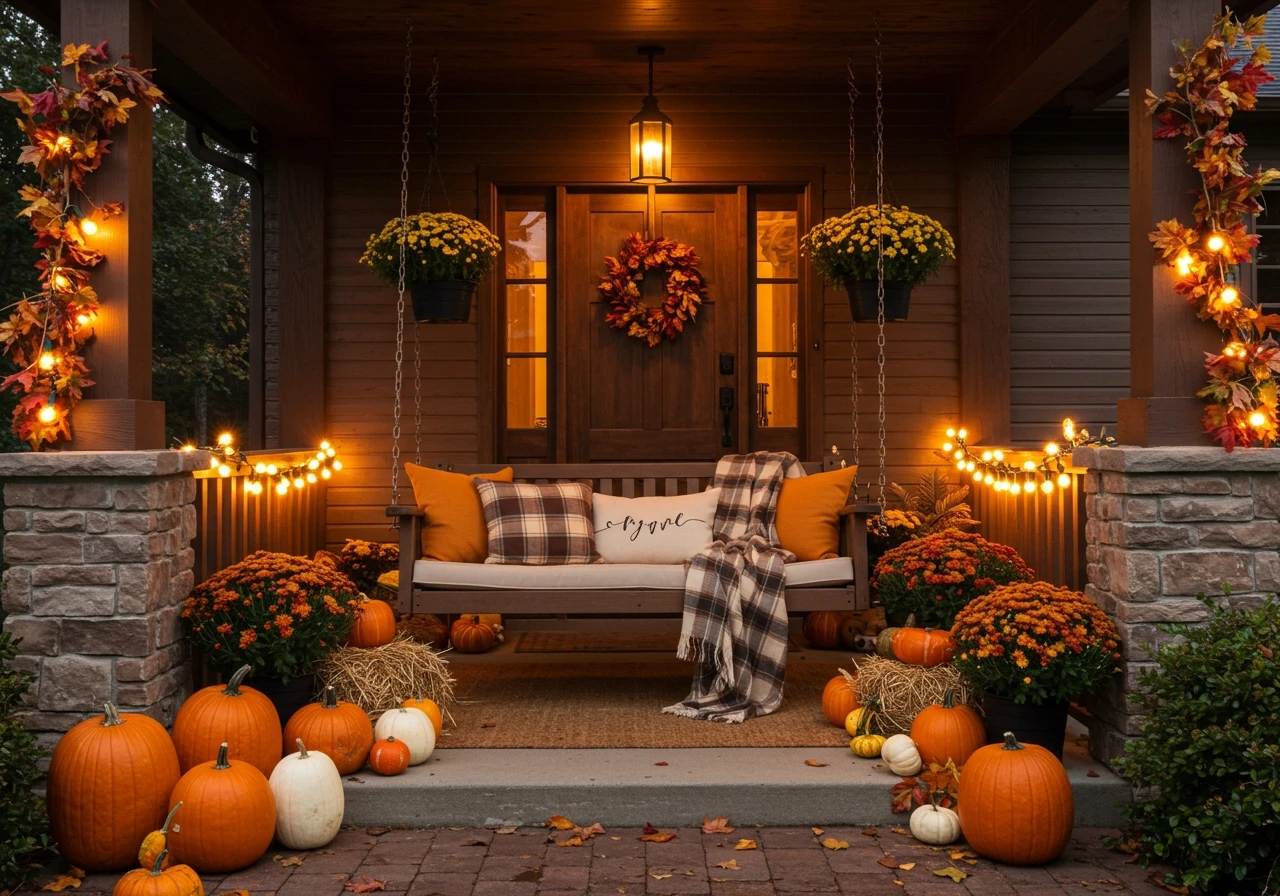In today’s fast-paced world, finding a moment of peace can feel like a luxury. But what if you could carve out a dedicated slice of serenity right within your own walls? Creating a meditation room or even just a small meditation space is a powerful way to cultivate mindfulness, reduce stress, and reconnect with yourself.
Forget needing a huge, empty room! Whether you have a spare corner, a small nook, or just a little imagination, designing your personal home sanctuary is totally achievable. It’s all about creating an environment that feels calm, inviting, and uniquely yours.
Ready to transform a part of your home into a haven of tranquility? Let’s dive into some inspiring and practical meditation room ideas to get you started on your journey to inner peace (and outer style!).
1. Embrace Simplicity: The Minimalist Meditation Nook
Sometimes, less truly is more, especially when aiming for mental clarity. A minimalist approach strips away distractions, leaving only the essentials for your practice.
- The Vibe: Clean lines, uncluttered surfaces, and a focus on function. Think “intentional emptiness.”
- Get the Look: Choose a quiet corner. All you really need is a comfortable meditation cushion or zabuton. Add perhaps one small, meaningful object – a smooth stone, a simple vase with a single stem, or a small singing bowl. Keep the color palette neutral and calming (soft whites, beiges, light grays). Natural light is a huge plus here.
- Expert Tip: Focus on quality over quantity. Invest in a high-quality cushion that supports good posture. Decluttering the physical space helps declutter the mind. This approach works wonderfully even in the smallest areas, proving you don’t need much room to find peace. Perfect for integrating into small apartment decorating schemes.
2. Breathe Easy: The Nature-Infused Retreat
Tap into the calming power of the natural world by bringing the outdoors in. Biophilic design – incorporating natural elements – is proven to reduce stress and enhance well-being.
- The Vibe: Earthy, organic, refreshing, and alive. Like meditating in a serene forest clearing.
- Get the Look: Plants are key! Choose easy-care varieties known for air purification like snake plants, spider plants, or peace lilies. Incorporate natural materials: a wooden stool or bench, bamboo accents, a jute or seagrass rug, stone coasters. Maximize natural light if possible, or use soft, warm artificial light that mimics sunlight. Consider a small tabletop water feature for soothing sounds.
- Expert Tip: Stick to an earthy color palette – greens, browns, tans, and stone grays. Vary the texture of your natural elements (smooth wood, rough stone, soft leaves) to engage the senses subtly.
3. Color Your Calm: The Psychology-Driven Palette
Dive deeper than just aesthetics and leverage the psychological impact of color to cultivate specific moods in your meditation space. Choosing colors intentionally can significantly enhance feelings of peace, focus, or grounding.
- The Vibe: Intentionally mood-setting, harmonious, and subtly influential. Using color as a therapeutic tool.
- Get the Look: Research the effects of different colors. Soft blues are often associated with serenity and calm, ideal for reducing stress. Gentle greens connect us to nature and promote feelings of balance and refreshment. Earthy neutrals like beige, taupe, or soft gray create a grounding, stable atmosphere. Even muted purples (like lavender) can evoke a sense of spirituality and peace. Choose one dominant calming color and use variations or complementary soft tones for accents.
- Expert Tip: Consider the shade and intensity of the color. Bright, saturated colors can be energizing or even agitating, so opt for muted, softer, or pastel versions of your chosen hue for a truly tranquil effect. Test paint swatches in the actual lighting of your space before committing.
4. Smart Serenity: The Multi-Functional Zen Zone
Don’t have a dedicated room to spare? No problem! Integrate your meditation space seamlessly into another area, like a guest room, home office, or even a quiet corner of your living room.
- The Vibe: Cleverly defined, harmonious, and adaptable. Proving peace can be found anywhere.
- Get the Look: Use visual cues to define the meditation zone. A specific rug, a floor cushion that can be easily stored, or a beautiful folding screen can cordon off the area when needed. Consider furniture that serves dual purposes – an ottoman with storage for your meditation supplies, or a bookshelf that holds both books and mindful objects. Keep the meditation elements easily accessible but tidy.
- Expert Tip: Ensure the meditation zone feels distinct, even if it’s small. Use calming colors and textures within that specific spot. When integrating into a guest room, ensure the meditation elements can be easily tucked away or presented as beautiful, calming decor when guests arrive. Storage baskets are your best friend here!
5. Bohemian Bliss: The Free-Spirited Escape
Channel your inner wanderer with a meditation space that’s rich in texture, pattern, and collected treasures. A Bohemian approach is perfect for those who find peace in vibrant, yet soulful, surroundings.
- The Vibe: Eclectic, layered, warm, and deeply personal. Think global influences meet cozy comfort.
- Get the Look: Mix and match textiles! Layer patterned rugs (kilim, Persian-style), hang macrame wall art or tapestries, and pile on embroidered or tasseled floor cushions. Incorporate natural wood elements, rattan furniture, and plenty of plants. Don’t shy away from color, but keep it grounded with earthy tones. Scatter meaningful objects from travels or nature.
- Expert Tip: The key to successful Boho is curated eclecticism, not chaos. Stick to a general color family (e.g., warm spices, earthy greens, desert hues) to tie disparate elements together. Ensure there’s still a clear focal point for your meditation practice.
6. Listen Inward: The Sound Sanctuary
For many, sound (or the lack thereof) is crucial for deep meditation. Design a space that either embraces calming sounds or prioritizes profound silence to enhance your practice.
- The Vibe: Acoustically aware, focused, immersive, and deeply calming.
- Get the Look: Consider sound-dampening elements like thick rugs, heavy curtains, or fabric wall hangings if external noise is an issue. Alternatively, introduce intentional sound: a high-quality Tibetan singing bowl, gentle wind chimes near an open window (if the outside sounds are pleasant), or a discreet speaker system for playing ambient soundscapes or guided meditations. Keep visual clutter minimal to let the auditory experience take center stage.
- Expert Tip: Experiment to find what sounds (or silence) resonate most with you. Even the gentle hum of a small tabletop water feature can create a soothing focal point for the mind. If using technology, ensure cords and devices are neatly managed to avoid visual distraction.
7. Peace on Wheels: The Mindful Mobile Cart
Perfect for multi-use spaces or those who like flexibility, create a dedicated meditation station on a stylish bar cart or utility trolley. Roll your calm wherever you need it most!
- The Vibe: Flexible, organized, compact, and convenient. Bringing serenity to any corner.
- Get the Look: Choose an attractive rolling cart that fits your decor style (metal, wood, rattan). Dedicate shelves to your essentials: top shelf for a focal object (small statue, plant, candle), middle shelf for meditation aids (timer, journal, eye pillow, essential oils), bottom shelf for your cushion or folded blanket/mat. Keep it curated and tidy. Park it in a designated “home base” corner when not in use.
- Expert Tip: Choose items that fit well and won’t easily topple when the cart moves. Use small trays or containers on the shelves to keep smaller items organized. This is a fantastic solution for renters or those who can’t dedicate a permanent spot. Ensure the cart rolls smoothly and quietly.
8. Sky-High Serenity: The Attic or Loft Zen Den
Utilize often-overlooked spaces like attics or lofts. Their unique architecture, slanted ceilings, and sense of separation can create an inherently cozy and secluded meditation retreat.
- The Vibe: Secluded, cozy, unique, and elevated (literally and figuratively!).
- Get the Look: Embrace the architectural quirks! Place your meditation cushion under a slanted ceiling or near a unique window (like a skylight or round window). Keep furnishings low to the ground to maximize the feeling of space. Use light colors on the walls and ceiling to counteract potential darkness. String lights along beams can add magical ambiance. Ensure good ventilation. This approach is perfect for making the most of a loft apartment.
- Expert Tip: Pay attention to temperature control, as attics can get hot or cold. Ensure adequate insulation or have portable heating/cooling options available. Use the sense of being “away from it all” to your advantage – minimize clutter and distractions rigorously in this special space.
9. Serene Simplicity: The Japanese-Inspired Zone
Draw inspiration from the time-honored aesthetics of Japanese design, known for its emphasis on simplicity, natural materials, and tranquility. This style creates a space that feels both grounded and refined.
- The Vibe: Orderly, peaceful, natural, and profoundly calm. Reflects balance and harmony.
- Get the Look: Think clean lines and uncluttered spaces. Incorporate natural wood elements – bamboo flooring or accents, a simple wooden bench, or a low paulownia wood table. Use shoji screens as room dividers or window coverings for diffused light. A tatami mat defines the space beautifully and provides a traditional base. Keep decor minimal: perhaps a single ikebana-style floral arrangement, a piece of calligraphy, or a traditional zabuton cushion. The color palette should be neutral and earthy.
- Expert Tip: Focus on the concept of Ma – the beauty of empty space. Avoid overcrowding. Each element should feel intentional and have room to breathe. This appreciation for space is central to creating a truly calming Japanese-inspired feel.
10. The Power of One: Singular Focus Sanctuary
Instead of multiple decorative elements, design your meditation space around a single, powerful focal point that holds deep meaning or aesthetic resonance for you. This fosters laser-like focus and minimizes distraction.
- The Vibe: Minimalist, intentional, focused, and deeply personal. Finding peace through singular attention.
- Get the Look: Choose one significant object as the centerpiece: a beautiful piece of natural wood, a meaningful sculpture or statue (like Buddha or Ganesha), a large geode crystal, a single stunning plant, or a piece of captivating abstract art. Position your meditation cushion directly facing this object. Keep the surrounding area extremely simple and decluttered – neutral walls, simple flooring, minimal other items. The lighting should subtly highlight the focal object.
- Expert Tip: The chosen object should genuinely inspire calm or focus for you. It’s less about trend and more about personal connection. Ensure the scale of the object is appropriate for the space – not overwhelmingly large or insignificantly small. Let the empty space around the object enhance its presence.
11. Mind & Body Flow: The Yoga & Meditation Combo Space
For those who practice both yoga and meditation, designing a space that accommodates both activities makes perfect sense. It encourages a seamless transition from physical movement to mental stillness.
- The Vibe: Flexible, spacious (enough for movement), grounding, and supportive of holistic wellness.
- Get the Look: Ensure enough clear floor space to comfortably roll out a yoga mat. Storage is key: incorporate stylish baskets or wall hooks for mats, blocks, straps, and blankets. Keep the meditation cushion(s) easily accessible. A full-length mirror can be helpful for checking alignment during yoga but consider if it’s distracting for meditation (perhaps it can be covered or positioned thoughtfully). Maintain a calming, uncluttered aesthetic overall.
- Expert Tip: Define zones subtly. Perhaps the yoga area has the open floor space, while the meditation zone is marked by a specific rug, cushion setup, or small altar against one wall. Ensure flooring is comfortable and non-slip for yoga practice.
12. Urban Oasis: The Studio Apartment Sanctuary Solution
Living in a studio apartment doesn’t mean sacrificing your serenity! Clever design tricks can help you carve out a dedicated meditation zone even within a single multi-functional room.
- The Vibe: Smartly zoned, peaceful pocket, visually distinct yet harmonious with the overall decor.
- Get the Look: Define the space visually. Use a distinct rug (even a small round one), place a tall plant as a soft barrier, or utilize a lightweight, open bookshelf (like an étagère) to create separation without blocking light or flow. Choose foldable or stackable meditation cushions that can be easily stored when not in use. Utilize vertical space for calming elements – wall hangings, small floating shelves for mindful objects.
- Expert Tip: Consistency in color palette or style helps integrate the meditation nook with the rest of the studio. Even if the style is consistent, use texture or a subtle shift in shade within the nook to make it feel special and separate. Keep it rigorously tidy, as clutter in a small space feels overwhelming quickly.
13. Deep Dive Within: The Dark & Moody Retreat
While bright and airy spaces are common, some find deeper introspection and calm in darker, more enveloping environments. Think cozy den meets mindful sanctuary.
- The Vibe: Introspective, cocooning, grounded, and deeply calming. Perfect for turning inward.
- Get the Look: Embrace rich, deep colors like charcoal gray, navy blue, forest green, or even eggplant purple for the walls or significant accents. Balance the dark tones with soft, warm lighting – think dimmable floor lamps, salt lamps, or candlelight (safely!). Incorporate plush textures like velvet cushions, faux fur throws, or heavy drapery to enhance the cozy, enclosed feeling. Metallic accents (brass, copper) can add a touch of warmth and reflection.
- Expert Tip: Ensure enough soft lighting options to prevent the space from feeling gloomy or oppressive. The goal is comforting enclosure, not darkness. Use mirrors strategically to add depth without sacrificing the intimate feel. Keep clutter strictly minimal, as it’s more noticeable against dark backdrops.
14. Patterns of Peace: The Sacred Geometry Nook
Harness the power of ancient symbols and patterns known for their harmonious and balancing properties. Sacred geometry can provide a powerful visual focus for meditation.
- The Vibe: Focused, harmonious, energetically aligned, and visually intriguing.
- Get the Look: Incorporate patterns like mandalas, the Flower of Life, Sri Yantra, or Metatron’s Cube. This could be through wall decals, framed art prints, tapestries, or even subtly patterned cushions or rugs. Choose one main symbol as a focal point to avoid visual overwhelm. Keep the surrounding decor relatively simple to let the geometry shine. Natural materials like wood and stone complement these patterns well.
- Expert Tip: Understand the symbolism behind the geometry you choose to deepen its meaning in your practice. Position your primary geometric focal point directly in your line of sight when seated for meditation to aid concentration.
15. Al Fresco Calm: The Outdoor Meditation Corner
Connect directly with the elements by creating your meditation space outdoors – on a balcony, patio, porch, or secluded garden spot. Fresh air and natural sounds can profoundly enhance your practice.
- The Vibe: Grounded, refreshing, connected to nature, and revitalizing.
- Get the Look: Choose a sheltered spot, protected from harsh sun or rain if possible. Use weather-resistant cushions or have easily portable indoor cushions. Define the area with an outdoor rug or natural paving stones. Incorporate potted plants, perhaps some fragrant herbs like lavender or mint. Consider adding wind chimes for gentle sound or a small solar-powered water feature. Comfortable, simple seating (floor cushion, low bench) is key.
- Expert Tip: Privacy is important. Use tall potted plants, trellises with climbing vines, or outdoor screens to create a sense of seclusion if needed. Have a plan for storing cushions or bringing them inside during inclement weather. Embrace the natural sounds, but if nearby noise is distracting, consider using headphones with calming music or guided meditations.
16. Wired for Zen: Tech-Enhanced Tranquility
Mindfully integrate technology to support and deepen your meditation practice. Smart lighting, sound apps, and biofeedback devices can become valuable tools in your journey inward.
- The Vibe: Modern, customizable, supportive, and guided. Using tech as a tool, not a distraction.
- Get the Look: Incorporate smart lighting (like Philips Hue) to set specific color scenes (e.g., calming blues, warm oranges) or simulate sunrise/sunset for timed sessions. Use a high-quality speaker or headphones for guided meditations or ambient soundscapes from apps like Calm or Headspace. Consider biofeedback devices (like Muse headband) that provide real-time feedback on your mental state. Ensure charging stations and cords are neatly managed and hidden to maintain a calm aesthetic.
- Expert Tip: Set clear boundaries. Use technology only as a tool to support your practice, not as a source of distraction. Turn off notifications on any devices used in the space. The goal is enhanced focus, not more screen time. Choose apps and devices that genuinely resonate with you and aid your practice.
17. Global Zen Fusion: Weaving Worldly Calm
Draw inspiration from various tranquil traditions around the world, blending elements harmoniously to create a unique and personal sanctuary that reflects a global sense of peace.
- The Vibe: Eclectic yet harmonious, cultured, soulful, and universally calming. A tapestry of tranquility traditions.
- Get the Look: Thoughtfully combine elements from different aesthetics known for serenity. For example, pair a Japanese-style low table with Moroccan floor cushions, place a Bali-inspired stone statue near a Scandinavian-design simple lamp, or hang Indian block-print textiles near a minimalist Zen garden box. The key is finding common threads – perhaps a shared color palette, natural materials, or a focus on handcrafted quality.
- Expert Tip: Curate carefully to avoid a chaotic or disjointed feel. Choose 2-3 cultural influences maximum and find ways they complement each other through color, texture, or form. Stick to an overall calming base (neutral walls, simple flooring) to allow the fused elements to coexist peacefully. Focus on the feeling of peace each element evokes, rather than just collecting items.
18. Artful Intention: The Gallery Wall Zen Zone
Create a visually inspiring meditation space surrounded by art and imagery that evokes peace, mindfulness, or personal meaning. Your walls become a source of calm contemplation.
- The Vibe: Inspiring, personal, contemplative, and visually engaging (in a calming way).
- Get the Look: Curate a gallery wall specifically for your meditation nook. Choose art prints, photographs, or objects that resonate with tranquility – abstract landscapes, nature close-ups, minimalist line drawings, calming color palettes, or meaningful symbols/quotes. Arrange them thoughtfully above or around your meditation seat. Use cohesive framing (e.g., all light wood frames or all black frames) for a unified look. Balance the visual interest with simple, comfortable seating.
- Expert Tip: Choose art that calms rather than stimulates the mind. Look for pieces with soft edges, serene subjects, or balanced compositions. The goal is gentle inspiration, not visual overload. Consider incorporating mirrors strategically within the gallery wall to add depth and reflect light.
19. The Elevated Altar Shelf: Sacred Space Saver
For those truly tight on space or preferring a more minimalist approach, create a beautiful and meaningful focal point using just a simple wall shelf dedicated as your altar.
- The Vibe: Focused, minimalist, sacred display, elegant, and highly space-efficient.
- Get the Look: Install a sturdy floating shelf at eye level or slightly above when seated. Choose a material that resonates with you (natural wood, smooth stone-look, simple white). Carefully curate a few meaningful items to display – a small statue, a favorite crystal, a framed mantra, a tiny plant, or a symbolic object. Position your meditation cushion directly below it. Consider adding a small, discreet picture light above or below the shelf to highlight it.
- Expert Tip: Keep the shelf strictly uncluttered. Its power lies in its focused simplicity. Rotate items seasonally or based on your current intention to keep the space feeling fresh and relevant to your practice. This is an excellent way to create a dedicated spiritual corner without taking up any floor space.
20. Coastal Calm: The Beach-Inspired Breathwork Spot
Capture the soothing essence of the seaside with a meditation space inspired by sandy shores, ocean breezes, and the rhythmic sound of waves.
- The Vibe: Airy, light, refreshing, and naturally calming. Like a mini-vacation for the mind.
- Get the Look: Use a light and breezy color palette – sandy beiges, soft whites, seafoam greens, and pale blues. Incorporate natural textures reminiscent of the beach: jute or sisal rugs, driftwood accents, smooth sea stones, capiz shell chimes, or woven baskets. Maximize natural light. Consider sheer, flowy curtains that move gently with any breeze. Keep furnishings light and minimal. A subtle ocean-scented candle or diffuser can enhance the theme.
- Expert Tip: Focus on creating a feeling of openness and lightness. Avoid heavy furniture or dark colors. Play a recording of gentle ocean waves during your meditation for an immersive experience. Collected seashells or sea glass can be beautiful, mindful objects for your altar or shelves.
21. A Place for Two: The Partner Meditation Space
Create a shared sanctuary designed for couples or housemates to practice mindfulness together, fostering connection alongside inner peace.
- The Vibe: Connected, harmonious, shared, and mutually supportive.
- Get the Look: Ensure enough comfortable seating for two – matching floor cushions, a wide meditation bench, or complementary seating arrangements. Define the space clearly. Consider a shared altar or focal point, perhaps with objects meaningful to both individuals. Maintain balance and symmetry in the layout if possible. Keep the aesthetic calming and agreeable to both parties – find common ground in color palettes and decor styles.
- Expert Tip: Communication is key! Discuss what elements help each person feel calm and focused, and find ways to incorporate both preferences harmoniously. Establish shared guidelines for using the space to ensure mutual respect and tranquility. The act of creating the space together can be a bonding experience in itself.
Creating your own meditation room or meditation space is a beautiful act of self-care. It doesn’t need to be elaborate or expensive; it just needs to feel right for you. By incorporating elements that soothe your senses and calm your mind, you can design a personal home sanctuary that supports your journey toward greater peace and mindfulness every single day. Sweet nesting!





























